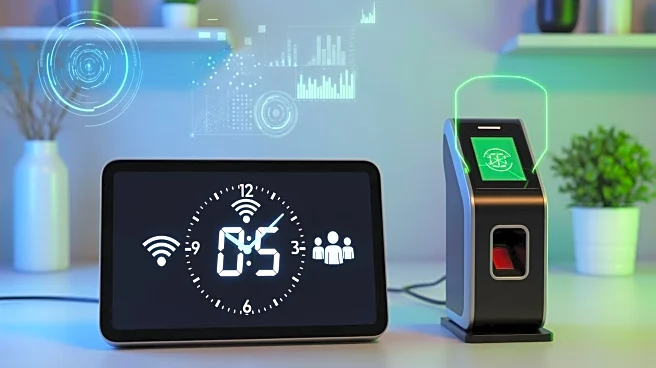What's Happening?
The Remote Workforce Monitoring Tools Market is experiencing significant growth, driven by the increasing adoption of remote work practices. According to a recent study by HTF Market Intelligence, the market
is projected to grow at a compound annual growth rate (CAGR) of 16% from 2025 to 2032, expanding from $4 billion in 2025 to $11 billion by 2032. Key players in this market include Teramind, ActivTrak, Hubstaff, and Time Doctor, among others. These tools are designed to monitor employee performance, activity, and productivity in remote settings, providing insights into team performance and ensuring accountability. The market is dominated by North America, with Asia Pacific identified as the fastest-growing region. The demand for these tools is fueled by the need for productivity and accountability in remote work environments, integration with HR and project management systems, and compliance requirements.
Why It's Important?
The rapid expansion of the Remote Workforce Monitoring Tools Market is significant for several reasons. As remote work becomes more prevalent, organizations are increasingly relying on these tools to maintain productivity and accountability. This trend impacts how companies manage their workforce, potentially leading to changes in employee monitoring practices and privacy concerns. The growth of this market also reflects broader shifts in work culture, where remote work is becoming a permanent fixture rather than a temporary solution. Companies that effectively utilize these tools can gain competitive advantages by optimizing workforce management and improving efficiency. However, the increased monitoring may raise ethical concerns regarding employee privacy and autonomy.
What's Next?
As the market continues to grow, companies may face challenges related to employee privacy and resistance to monitoring practices. There is potential for regulatory developments addressing these concerns, which could impact how these tools are implemented. Additionally, advancements in AI and analytics may lead to more sophisticated monitoring solutions, offering deeper insights into employee performance. Organizations will need to balance the benefits of these tools with the potential drawbacks, such as reduced employee morale and engagement due to over-monitoring. The integration of these tools with other platforms, such as learning and coaching systems, could enhance their value and drive further adoption.
Beyond the Headlines
The expansion of the Remote Workforce Monitoring Tools Market may lead to long-term shifts in workplace culture and management practices. As remote work becomes more entrenched, companies may need to redefine their approaches to employee engagement and productivity. The ethical implications of increased monitoring could spark debates about privacy rights and the role of technology in the workplace. Additionally, the market's growth may influence the development of new regulations and standards for remote work practices, shaping the future of work in the U.S. and globally.











